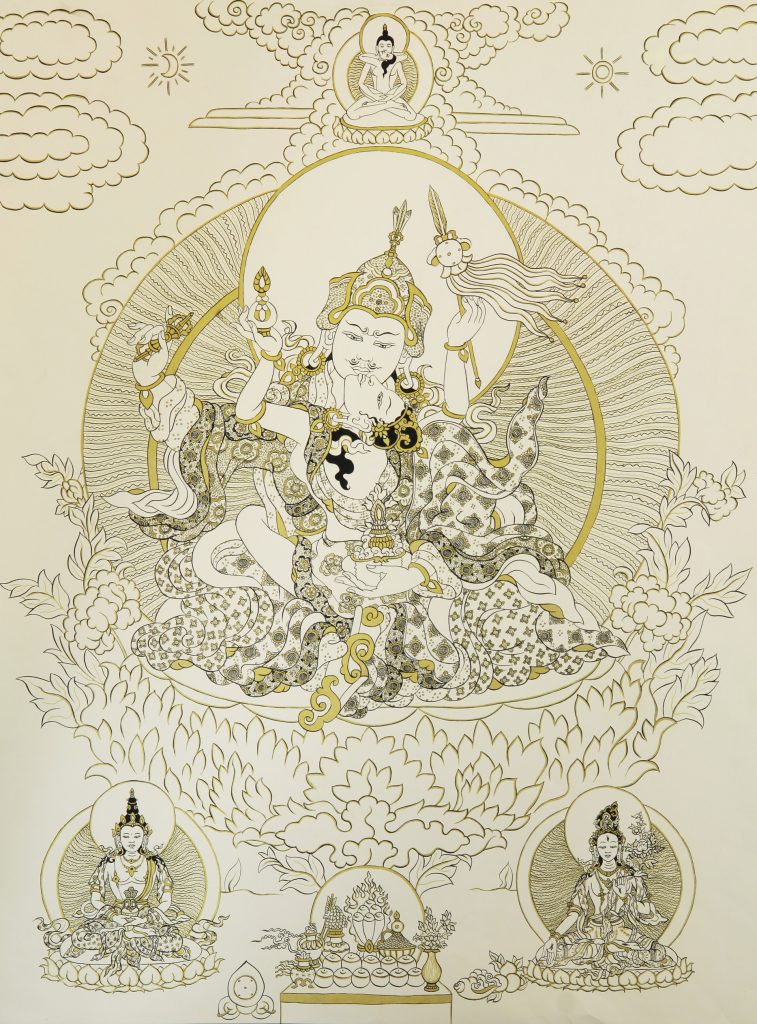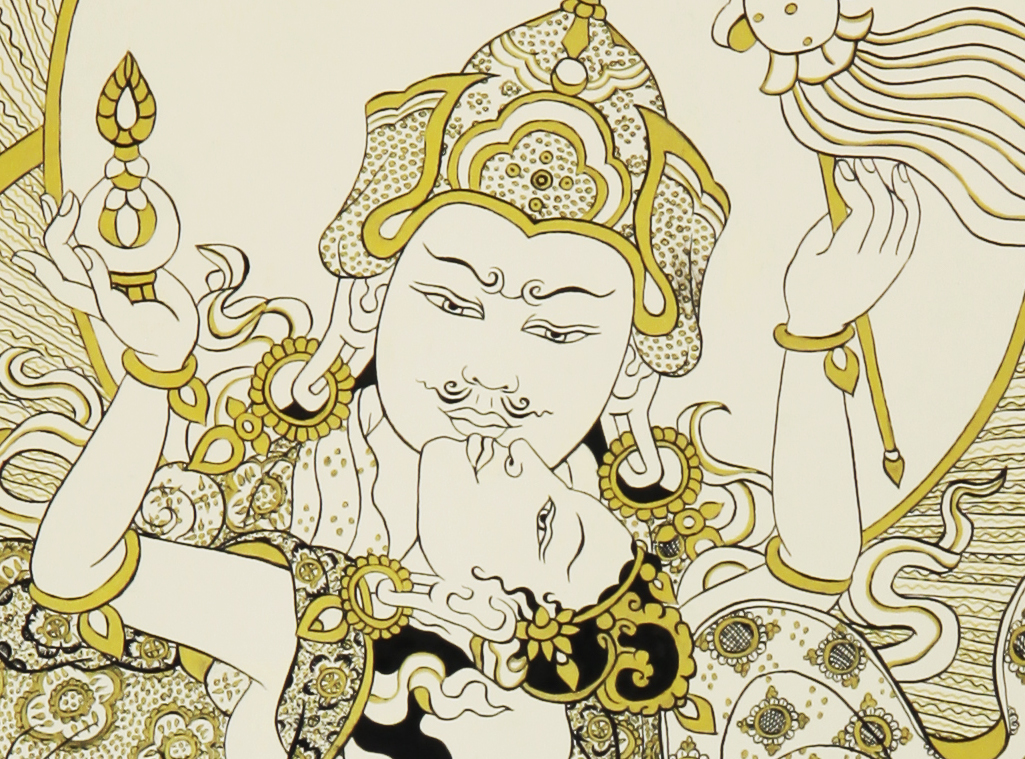The doctrine of the Middle Way (Skt. madhyama-pratipad, Tib. ume lam) is one of the fundamental teachings of Buddhism. According to Theravada Buddhism, the term “Middle Way” is used for the first time in Dhammacakkappavattana Sutta, which is perceived as the first teaching that Buddha Shakyamuni delivered after his awakening. In this text the Buddha explains the Noble Eightfold Path as a middle way of moderation between the extremes.
In Mahayana Buddhism the Middle Way refers to the understanding of the emptiness (Skt. shunyata, Tib. tong pa nyid) that transcends the extremes of existence and non-existence. The Middle Way School of philosophy, known as Madhyamaka, was founded by the 2nd century Buddhist teacher Nagarjuna and represents the idea that all phenomena are empty by nature: at the conventional level, they do exist, but ultimately they are empty of inherent existence.
The universal message of the theory of the Middle Way is to find a balance between all extremes and to be able to see the truth that lies in the middle. It can be applied also to the human emotional experience. When emotions such as happiness and sorrow or love and hate are taken to the extreme, they bring suffering. The Buddhist approach of middle way is to be aware of the extremes and avoid them.
Even positive emotions like joy and love can cause suffering if we are attached to them and cannot accept their impermanent nature. The love of another person can be a source of great happiness but also bring tremendous suffering – jealousy, attachment, possessiveness and fears. The understanding of the impermanence of all phenomena is the application of the middle way. The realization of the interconnectedness between everything and the dependent origination (Skt. pratitya–samutpada, Tib. tendrel) is another method of applying the middle way. Being part of the universal unity, we all share the infinite ocean of wisdom and compassion. The middle way is the boat that brings us from to shore of suffering, samsara, to the shore of eternal peace, nirvana.

Where is the middle way in love?
Where is the middle way in the fire that burns one’s heart?
Can you stop the fire at the middle of its burning?
Can you pour a water to extinguish that fire?
When the love bring awareness and when it brings illusions?
Can you follow the middle way, accepting all realities in one truth?
Samsara is full of attachment,
Nirvana is the path of non-attachment.
When you are liberated from self-grasping
Attachment and non-attachment dissolve into space.
Karma gives conditions to feel emotions like love.
Dharma gives methods to transform emotions into wisdom.
If you feel too strong love, focus on the empty nature of love.
If you lose the feeling of love, awake its source in your heart.
Love is empty and emptiness is love –
the middle way of love.

